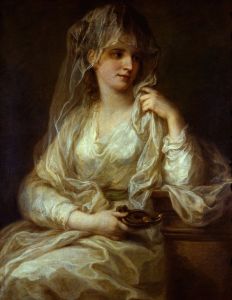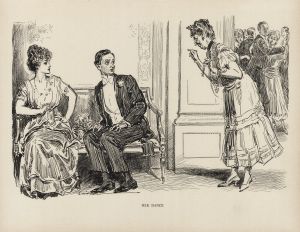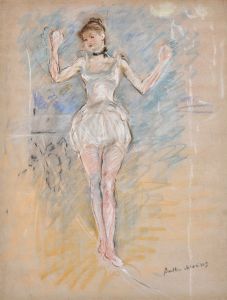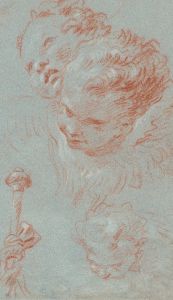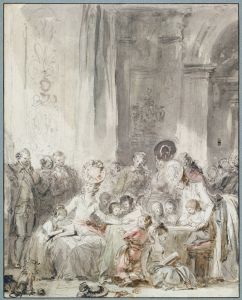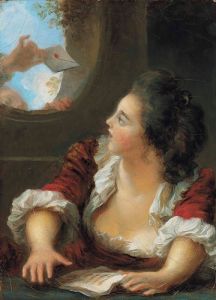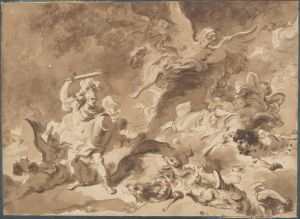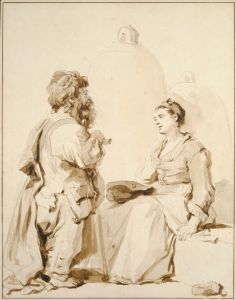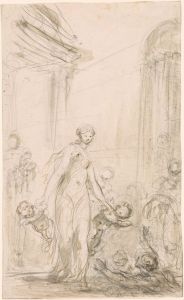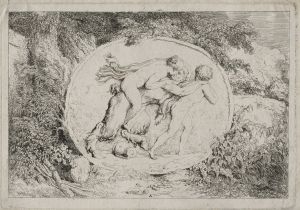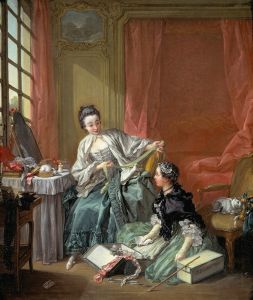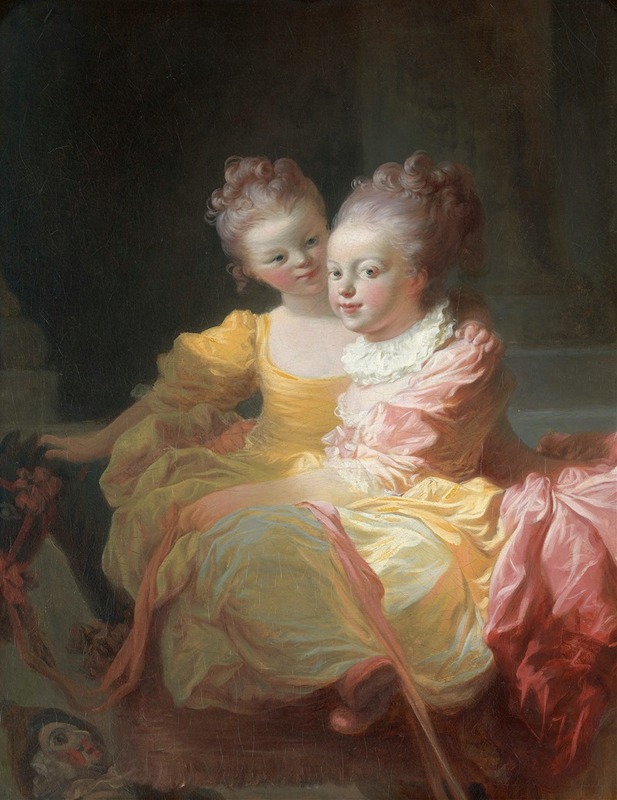
The Two Sisters
A hand-painted replica of Jean-Honoré Fragonard’s masterpiece The Two Sisters, meticulously crafted by professional artists to capture the true essence of the original. Each piece is created with museum-quality canvas and rare mineral pigments, carefully painted by experienced artists with delicate brushstrokes and rich, layered colors to perfectly recreate the texture of the original artwork. Unlike machine-printed reproductions, this hand-painted version brings the painting to life, infused with the artist’s emotions and skill in every stroke. Whether for personal collection or home decoration, it instantly elevates the artistic atmosphere of any space.
Jean-Honoré Fragonard's "The Two Sisters" is a captivating example of the Rococo style that characterized much of the artist's work. Fragonard, a prominent French painter of the 18th century, was known for his exuberant and fluid brushwork, as well as his ability to capture the playful and intimate moments of his subjects. While specific details about "The Two Sisters" are limited, the painting is often celebrated for its charm and the artist's skillful use of color and light.
Fragonard was born in 1732 in Grasse, France, and he showed an early aptitude for art. He studied under François Boucher, another leading Rococo artist, and later won the prestigious Prix de Rome, which allowed him to study in Italy. This experience greatly influenced his style, as he absorbed the works of the Italian masters and developed his own approach to painting.
"The Two Sisters" exemplifies Fragonard's ability to convey a sense of intimacy and warmth. The painting typically features two young women, often depicted in a serene and harmonious setting. Fragonard's use of soft, pastel colors and delicate brushstrokes creates a sense of lightness and grace, which is characteristic of the Rococo movement. This style was popular in the 18th century, particularly in France, and was known for its ornate and decorative qualities, often focusing on themes of love, nature, and playfulness.
Fragonard's work, including "The Two Sisters," often reflects the social and cultural milieu of the time. The Rococo period was marked by a shift away from the grandeur and formality of the Baroque era, moving towards a more personal and intimate portrayal of subjects. This change was partly influenced by the Enlightenment, which emphasized individualism and the exploration of human emotions.
In "The Two Sisters," Fragonard captures the essence of sibling companionship and affection. The painting's composition and the positioning of the figures suggest a close bond between the sisters, inviting viewers to contemplate the nature of their relationship. The artist's attention to detail, particularly in the rendering of fabrics and textures, adds to the overall sense of realism and immediacy.
Fragonard's legacy as a master of the Rococo style is well-established, and his works continue to be celebrated for their beauty and technical prowess. "The Two Sisters" is a testament to his ability to capture fleeting moments of joy and tenderness, making it a cherished piece in the canon of 18th-century French art.
While "The Two Sisters" may not be as widely recognized as some of Fragonard's other works, such as "The Swing" or "The Progress of Love" series, it remains an important example of his artistic vision and contribution to the Rococo movement. Fragonard's paintings, including this one, are housed in various museums and private collections around the world, where they continue to be admired by art enthusiasts and scholars alike.
In summary, Jean-Honoré Fragonard's "The Two Sisters" is a beautiful representation of the Rococo style, showcasing the artist's skill in capturing intimate and joyful moments. Through his use of color, light, and composition, Fragonard invites viewers to appreciate the elegance and charm of his subjects, making this painting a lasting testament to his artistic legacy.





